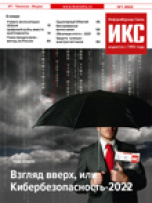| Рубрикатор |  |
 |
| Все новости |  |
World News |  |
 |
Impressions from the IPTV World Forum
| 08 апреля 2009 |
When Ovum attended the fifth IPTV World Forum in London, a number of fresh themes emerged. The scope of the forum has grown to address a range of adjacent markets and topic areas, reflecting a shift in focus beyond the initial preoccupation with closed-network pay-TV. Equal importance is now given to OTT content and services, while hybrid and cross-platform TV and media sharing are also climbing higher up the agenda.
OTT is no longer perceived as a threat to IPTV
Operators appear to have calmed down about - or perhaps simply accepted - the disruptive threat of online video, and are exploring ways to deliver OTT content and web-based applications via the TV. The absence of clear business models and lack of integration between the online and pay-TV environments remain the chief obstacles to making complementary OTT enhancements a reality.
IPTV alone is not enough to beat the competition
Operators and vendors now recognise that selling pay-TV over a closed network isn't quite the Holy Grail it was hyped to be with regard to customer acquisition and revenue generation. Service providers are looking at ways to both raise ARPU and make their services more compelling. There is growing interest in broadening the IPTV proposition with enhancements such as media sharing and access to OTT content via the set-top box (STB), Internet-connected TV or even games consoles.
IPTV won't work for everyone
In less-developed markets, operators are thinking twice about IPTV investment, particularly in the current financial climate. In many cases it's more pragmatic - and cost effective - for telcos to focus on satellite as their entry point into the TV market. Satellite can provide near-national coverage, without the need for broadband network upgrades and mass deployments of (relatively) expensive STBs. In such markets, a growing number of operators are pursuing a hybrid approach to TV deployment, offering broadcast services over DTH while simultaneously growing their fixed broadband customer bases with a view to enhancing the TV offering with on-demand and interactive services over broadband/IP at a later stage.
Catch-up TV is a major driver of the emerging on-demand culture
Catch-up TV offerings - both OTT and IPTV - are proving to be key drivers of non-linear, time-shifted video consumption. Online catch-up services are helping broadcasters and pay-TV operators diversify into cross-platform distribution while also changing consumers' expectations of what a TV service should be. Typically offered at a low cost or bundled into the subscription fee of a cable or IPTV package, TV-based replay offerings are helping to drive stickiness and loyalty as well as to differentiate against satellite and DTT.
Content is important but it isn't everything
All platforms strive to deliver compelling content, and those operators with deep enough pockets to secure exclusive sports rights are in a strong position to attract customers and generate high ARPU. However, when it comes to movies and TV programmes it's not content but features and service options that are becoming the key areas of differentiation. This is equally true in mature markets with high cable, satellite or DTH penetration, and those where low incomes and widespread piracy mean that premium content is readily available to most consumers at little or no cost.
Merchandising and marketing capabilities are key requirements
Too many implementations have fallen short in the ARPU department as a result of unimaginative packaging and poor marketing of features and service options. Also, despite endless talk about raising the value of audience eyeballs through relevant, targeted and/or interactive advertising, there are few real-world success cases. Operators continue to sit on a goldmine of untapped customer data while they strive to thrash out workable business models with content, advertising and other media partners.
Knowing consumer tastes and preferences is crucial to maximising sales
Information collected from viewing activity as well as from search and navigation processes can facilitate the targeting of relevant content to specific profiles within a properly segmented audience. Pay-TV operators and service providers need to sharpen up their understanding of the customer base if they want to survive and thrive in an increasingly individualised consumption environment.
By Jonathan Doran
Источник: Ovum
Читайте также:
Домашнее интерактивное МТС ТВ будет переименовано в KION с 1 июля
Россияне по итогам 2020 года стали на час больше ежедневно смотреть ТВ
Пандемия привела к росту рынка платного ТВ
Сбербанку достанется контрольный пакет в Rambler Group
Рынок платного телевидения России растет благодаря ОТТ и IPTV















Оставить свой комментарий:
Комментарии по материалу
Данный материал еще не комментировался.